Trauma, disbelief and plenty of ideas shared at NSW flood inquiry hearing in Lismore
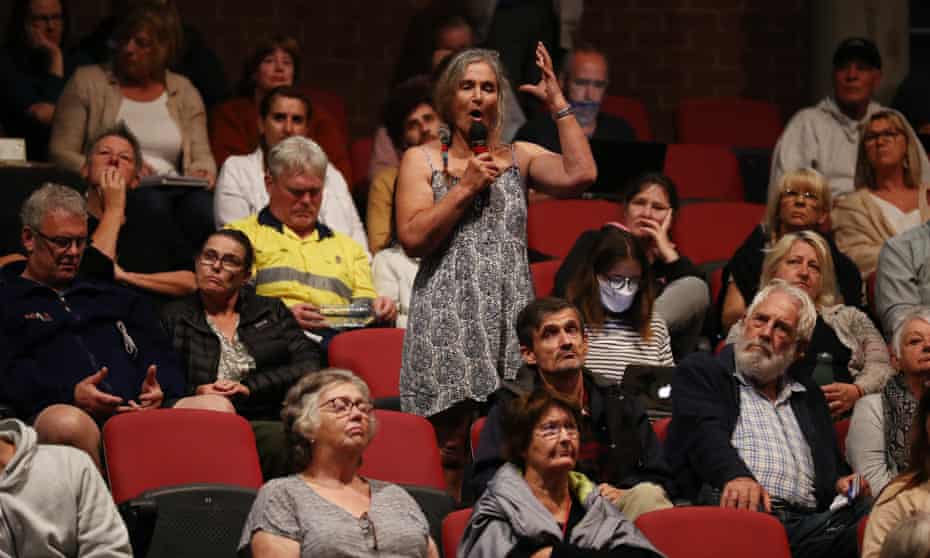
Residents of Lismore speak during the first public hearing of the 2022 NSW flood Inquiry in Lismore on Tuesday evening.
Photograph: Jason O’Brien/AAP
Northern rivers residents make their voices heard at first community hearing into devastating events they say could have been avoided
Northern rivers residents make their voices heard at first community hearing into devastating events they say could have been avoided
Tue 3 May 2022 23.25 BST
Megan James, who lives near Nimbin, was the first of many speakers to take the microphone at a university lecture theatre in Lismore for the first community hearing of the 2022 New South Wales flood inquiry on Tuesday evening.
“I’m the voice in the hills, but we’re no longer heard,” James said.
She told of how farmers once phoned Lismore to warn that their rain gauges were filling and a flood was on the way; now the town relied on official forecasts that weren’t always accurate.
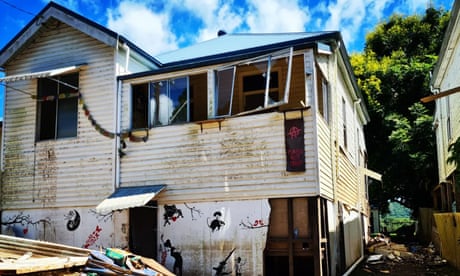
Land swaps, relocations or rebuilds: Lismore community grapples with its future
The lack of warning from authorities of the impending floods, on 28 February and 30 March, was one of the most prevalent themes at the town hall-style meeting, at which the inquiry’s leaders, Professor Mary O’Kane, an engineer and scientist, and Mick Fuller, the former NSW police commissioner, explained they had come to listen, not provide answers.
In the words of another speaker: “There was no real clear warning that it was going to be as bad as it was.”
One northern rivers resident said he hadn’t come to blame State Emergency Service volunteers or the local council, but their modelling systems appeared to be failing.
An array of ideas was proffered from the floor. Blocks and tackles could be used to secure houses in flood plains and wetlands of native flora planted to divert water away from residential areas, because “lots of people still want to stay in this place”.
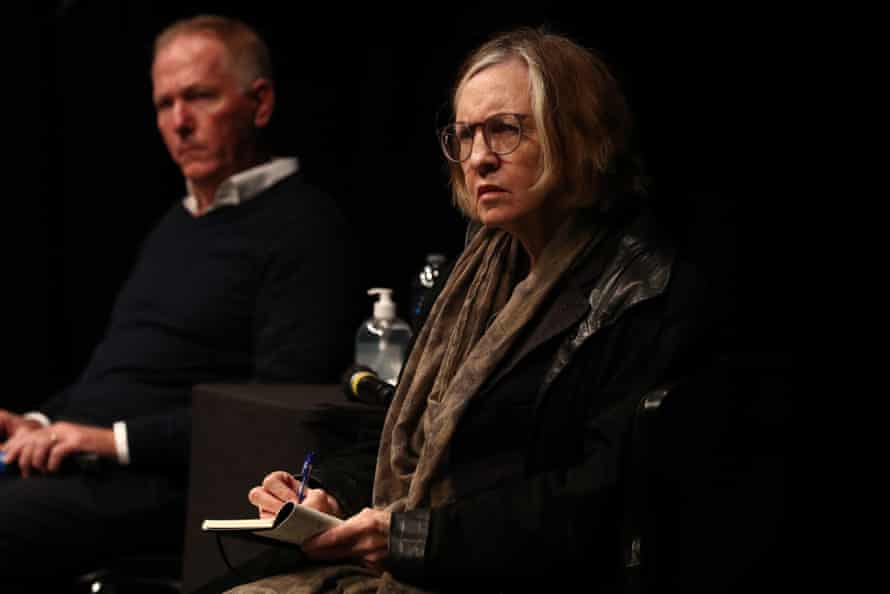
Megan James, who lives near Nimbin, was the first of many speakers to take the microphone at a university lecture theatre in Lismore for the first community hearing of the 2022 New South Wales flood inquiry on Tuesday evening.
“I’m the voice in the hills, but we’re no longer heard,” James said.
She told of how farmers once phoned Lismore to warn that their rain gauges were filling and a flood was on the way; now the town relied on official forecasts that weren’t always accurate.

Land swaps, relocations or rebuilds: Lismore community grapples with its future
The lack of warning from authorities of the impending floods, on 28 February and 30 March, was one of the most prevalent themes at the town hall-style meeting, at which the inquiry’s leaders, Professor Mary O’Kane, an engineer and scientist, and Mick Fuller, the former NSW police commissioner, explained they had come to listen, not provide answers.
In the words of another speaker: “There was no real clear warning that it was going to be as bad as it was.”
One northern rivers resident said he hadn’t come to blame State Emergency Service volunteers or the local council, but their modelling systems appeared to be failing.
An array of ideas was proffered from the floor. Blocks and tackles could be used to secure houses in flood plains and wetlands of native flora planted to divert water away from residential areas, because “lots of people still want to stay in this place”.

Professor Mary O’Kane (right) and Mick Fuller listen during the NSW flood inquiry in Lismore. Photograph: Jason O’Brien/AAP
Flood mitigation could include dredging Lismore Wilsons River and restoring it to the deep channel once used by ships – today it’s barely fit for a dingy. First Nations land management practices needed to be adopted.
The myriad of potholes in the region should be highlighted by white paint, because they were impossible to see at night on wet roads, and there were also calls to investigate whether the upgraded Pacific Highway had exacerbated flooding in some places.
I’d just like a cupboard for my undies, a pantry for my food.Displaced flood victim
Some suggested flood-zone houses should have mandatory roof hatches, like skylights, to prevent people in attics being drowned by rising waters. There were multiple calls for the insurance system to be overhauled, community communications systems to be strengthened with satellite, and a testimony about the impact on wildlife.
There were callouts for improved drainage and building flood-proof, because “clearly our infrastructure can’t handle this” and “disaster planning must be incorporated into regional planning”.
There were stories of trauma – the neighbours were screaming; children saw their pets drown. One woman referenced a friend who perished while trying to be saved on Facebook, and a miraculous rescue tale – someone was pulled from a strong torrent by a string of Christmas lights.
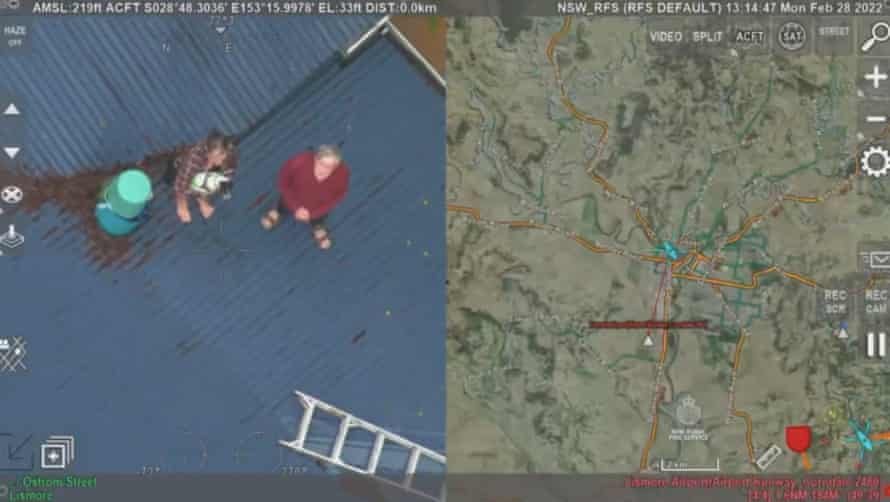
Flood mitigation could include dredging Lismore Wilsons River and restoring it to the deep channel once used by ships – today it’s barely fit for a dingy. First Nations land management practices needed to be adopted.
The myriad of potholes in the region should be highlighted by white paint, because they were impossible to see at night on wet roads, and there were also calls to investigate whether the upgraded Pacific Highway had exacerbated flooding in some places.
I’d just like a cupboard for my undies, a pantry for my food.Displaced flood victim
Some suggested flood-zone houses should have mandatory roof hatches, like skylights, to prevent people in attics being drowned by rising waters. There were multiple calls for the insurance system to be overhauled, community communications systems to be strengthened with satellite, and a testimony about the impact on wildlife.
There were callouts for improved drainage and building flood-proof, because “clearly our infrastructure can’t handle this” and “disaster planning must be incorporated into regional planning”.
There were stories of trauma – the neighbours were screaming; children saw their pets drown. One woman referenced a friend who perished while trying to be saved on Facebook, and a miraculous rescue tale – someone was pulled from a strong torrent by a string of Christmas lights.

An image taken on 28 February shows two Lismore residents and their dog stranded on the roof of a home during major flooding.
Photograph: NSW Rural Fire Service
There was even laughter when Byron Bay councillor Mark Swivel lamented the national media’s focus on Byron’s inundation– “the flood came to Byron because apparently water likes linen”.
The only agitation was when a woman spoke about being traumatised by the floods, which she attributed to climate change and a reliance on fossil fuels. She was met with applause and a couple of boos.
Stories were told from an array of perspectives. Helen Coyle, who lives with a disability, described being stuck in Ballina, unable to return to her Lismore home because the roads were cut. She went to the Ballina hospital for help but said staff chastised her for travelling with insufficient money.
She is calling for hospital staff to be kitted with the phone numbers for organisations that can support people with disabilities displaced by severe weather events.
A subsequent indignity, she said, was that the floods have robbed Lismore of public disabled toilets, only portaloos. Are the disabled expected to “shit themselves”?
Another Lismore resident called on flood clean-up volunteers to be trained in what is salvageable because well-intentioned volunteers had thrown away her son’s two prosthetic legs.
There was even laughter when Byron Bay councillor Mark Swivel lamented the national media’s focus on Byron’s inundation– “the flood came to Byron because apparently water likes linen”.
The only agitation was when a woman spoke about being traumatised by the floods, which she attributed to climate change and a reliance on fossil fuels. She was met with applause and a couple of boos.
Stories were told from an array of perspectives. Helen Coyle, who lives with a disability, described being stuck in Ballina, unable to return to her Lismore home because the roads were cut. She went to the Ballina hospital for help but said staff chastised her for travelling with insufficient money.
She is calling for hospital staff to be kitted with the phone numbers for organisations that can support people with disabilities displaced by severe weather events.
A subsequent indignity, she said, was that the floods have robbed Lismore of public disabled toilets, only portaloos. Are the disabled expected to “shit themselves”?
Another Lismore resident called on flood clean-up volunteers to be trained in what is salvageable because well-intentioned volunteers had thrown away her son’s two prosthetic legs.
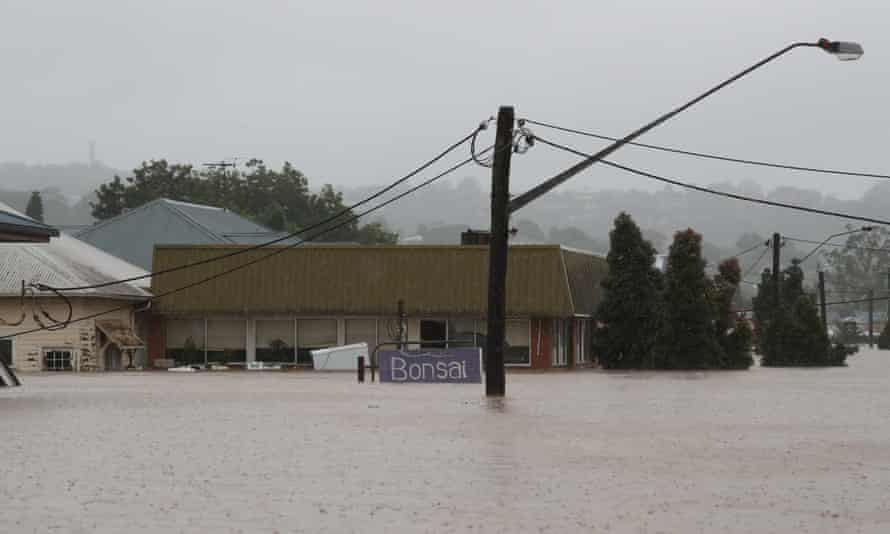
Flooding in Lismore on 28 February.
Photograph: Jason O'Brien/AAP
Bruno Ros, a vet specialising in large animals, spent the first post-flood days on helicopters looking for stranded livestock and visiting isolated farming properties.
“Plenty of people were on the ground, barking, screaming and pleading for help,” he said after the inquiry, “and for me as a vet the Department of Primary Industries was just inaccessible. I begged for assistance. It arrived seven days after the floods, seven days too late.”
Dr Cam Hollows, a doctor on the ground in Coraki, recounted working for 40 hours and treating 60 patients in the aftermath.
“We’ve repeated every single mistake of the bushfires,” he said.
Lismore Labor MP Janelle Saffin agreed: “Government agencies weren’t prepared, and they need to ramp up really quickly because that’s what disasters need, but they haven’t done that.”
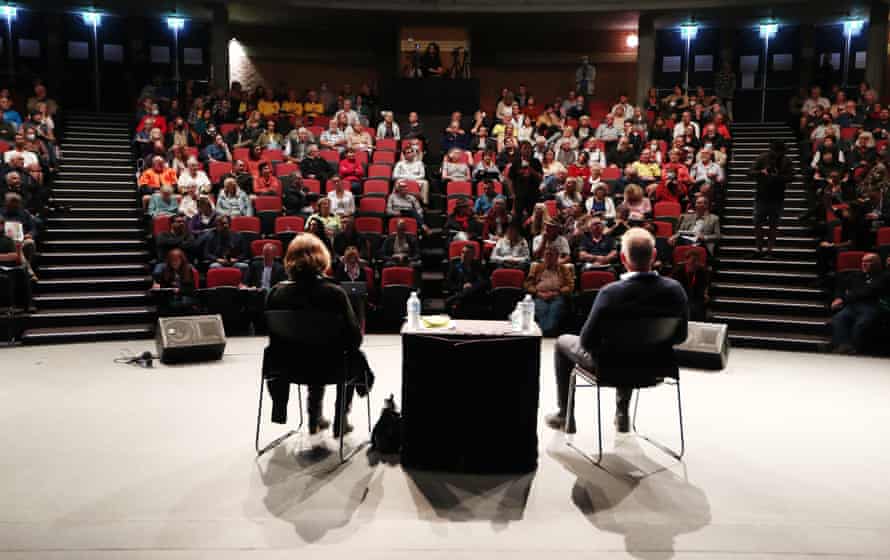
The NSW flood inquiry went for more than two hours in Lismore on Tuesday evening. Photograph: Jason O’Brien/AAP
Mark O’Toole, from Bungawalbin, said he asked members on a community Facebook page if anyone had been successful in securing a government business grant: “So far I’m up to 890 comments and nobody has got one”.
There are around 100 farmers just in his town, he said, and “the money needs to start flowing now, not in six months or 12 months.”
A woman fought back tears as she described families with children still camping in backyards. Another outlined simple wishes: “I’d just like a cupboard for my undies, a pantry for my food.”
For more than two hours the Lismore crowd listened in near silence – a demonstration of forbearance and patience from a community that had already endured so much.
The NSW flood inquiry will hold its next public hearing at the Tumbulgum Hall in the Tweed Shire on Wednesday. It is required to report to the premier by 30 September and is open to submissions from any member of the public, which can be made online, via email, post or phone.
Mark O’Toole, from Bungawalbin, said he asked members on a community Facebook page if anyone had been successful in securing a government business grant: “So far I’m up to 890 comments and nobody has got one”.
There are around 100 farmers just in his town, he said, and “the money needs to start flowing now, not in six months or 12 months.”
A woman fought back tears as she described families with children still camping in backyards. Another outlined simple wishes: “I’d just like a cupboard for my undies, a pantry for my food.”
For more than two hours the Lismore crowd listened in near silence – a demonstration of forbearance and patience from a community that had already endured so much.
The NSW flood inquiry will hold its next public hearing at the Tumbulgum Hall in the Tweed Shire on Wednesday. It is required to report to the premier by 30 September and is open to submissions from any member of the public, which can be made online, via email, post or phone.
No comments:
Post a Comment